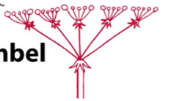Angiosperms
1/42
There's no tags or description
Looks like no tags are added yet.
Name | Mastery | Learn | Test | Matching | Spaced |
|---|
No study sessions yet.
43 Terms
What Period was the Origin & Spread of Angiosperms?
The Cretaceous Period
Unlike other organisms, Angiosperm sporic meiosis life cycle is…
Sporophyte Dependant
How many cotyledons will a Eudicot have?
Two
In a pollen grain Monocots would have ____ openings, while Eudicots would have _____.
One; Three
The Flower organs of Eudicots would come in multiples of _____ instead of _____ like Monocots.
4 or 5; 3
Paralell veins are ______ and Net-like veins are ______.
Monocot, Eudicot
In Eudicot stems vascular tissue form a…
ring
Which clade doesn’t have any Secondary Growth?
Monocots
Angiosperms that can perform photosynthesis but need water & nutrients form host are called…
Hemiparasites
What are Holoparasitic Angiosperms
Depend entirely on host, also lacks chlorophyll.
Myco-heterotrophs are plants that obtain nutrients from…
fungi
What are the Sepals of the flower?
Protective, green outer leaf of the flower.
The Sepals + Petals make up the…
Perianth
Reproductive whorl that contains the Stigma (opening), Style (stalk), and the Ovary is called the…
Carpel
If a flower has the 4 whorls (Petals, Sepals, Stamen, Carpel) that means it’s…
Complete
If a flower only has it’s Carpel but not the Stamen that means it’s…
Imperfect
Fusion b/w close parts like the Corella and Calyx would be described as a _______ modification.
Connation
Fusion b/w dissimilar parts like the Stamen and the Petals would be described as a _______ modification.
Adnation

Name the Inflorescence
Corymb

Name the Inflorescence
Spike

Name the Inflorescence
Head

Name the Inflorescence
Raceme

Name the Inflorescence
Panicle

Name the Inflorescence
Compound Umbel

Name the Inflorescence
Simple Umbel
When Ovules are attached to the Ovary walls with no locules what Placentation is that called?
Parietal Placentation
When the ovary has multiple locules with the ovaries attached to the central column, what placentation is this?
Axial Placentation
Ovary with no locules with the ovaries attached to the central column is called…
Free Central Placentation
What the petals, sepals, and stamen are below the Ovary that is called…
Hypogyny (Superior Ovary)
When the Perianth and the Stamen are above the ovary is called…
Epigyny (Inferior Ovary)
If a flower is “regular” that means it has ______ symmetry.
Radial
Flowers with radial symmetry are Zygomorphic. True or False?
False, they are Actinomorphic
How many Microsporangia are contained in a flowers Anthers pollen sacs?
4
Define what process these steps describe?
Microspore undergoes mitosis, makes Two-celled pollen grain (tube cell + generative cell)
The generative cell later divides to form two sperm cells
leading to a mature 3-celled microgametophyte (1 tube cell + 2 sperm cells)
Upon germination, the tube cell forms the pollen tube, which contains the three cells
Microgametogenisis: Development of the Male gametophyte from a pollen grain.
Define what process these steps describe?
A single diploid megasporocyte undergoes meiosis.
This produces 4 haploid megaspores. (but only 1 is functional)
Megasporogenesis: Development of the megaspore in the ovule
Define what process these steps describe?
Sporogenous cells (2n) develop into Microsporocytes (2n)
Undergoes meiosis to produce 1n Microspore tetrad
Releases by dehiscence
Microsporogenesis: Anthers producing microspores
Define what process these steps describe?
Megaspore nucleus undergoes 3 mitotic divisions → 8 nuclei within the developing embryo sac.
These nuclei then migrate + differentiate, forming a 7 celled, 8 nucleate mature embryo sac (megagametophyte)
Megagametogenesis: Development of the female gametophyte from the megaspore.
What are the 7 cells in the 8 nucleate embryo of the Megagametophyte?
3 Antipodal
1 Central Cell (w/ 2 polar nuclei)
1 Egg Cell
2 Synergids
What takes place in the first step of the Angiosperm Life Cycle?
Mature Sporophyte Generation: Undergoes Microsporogenesis and Megasporogenesis
During the Gametophyte generation, the ______ _____ and the _________ _____ develop from the Microspore and Megaspore (respectively)
Pollen Grain, Embryo Sac
The Pollen Grain reaches the stigma of the flower via…
Pollination
During Double Fertilization…
1 sperm cell from the generative cell fuses with the __________ in the embryo.
the 2nd one fuses w/ the polar nuclei in the central cell to form a _________ (3n) nucleus
This develop into the nutritive embryo tissue.
Zygote; Endosperm
After Fertilization, the Ovule develops into the _______ (embryo + endosperm within seed coat)
The ovary wall develops into ______.
Seed; Fruit